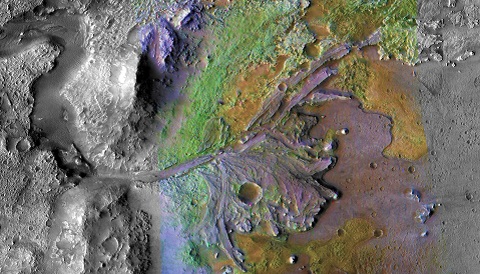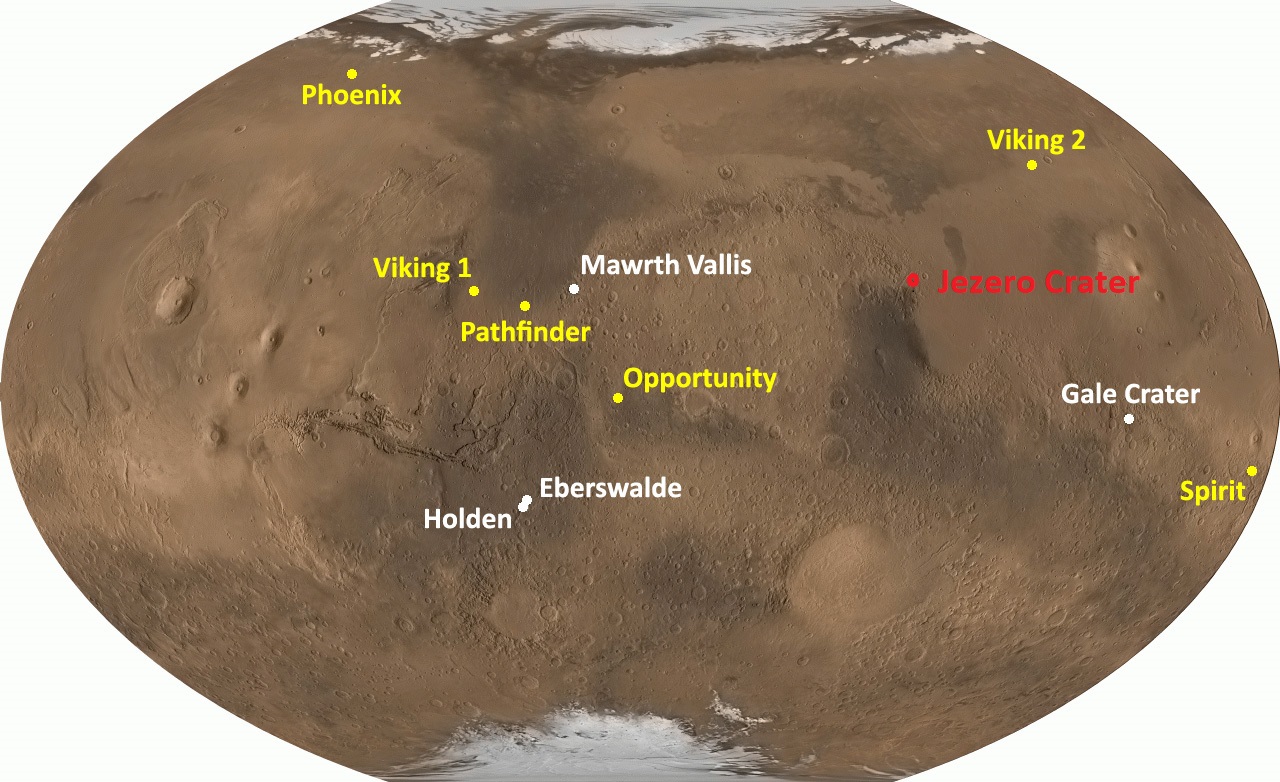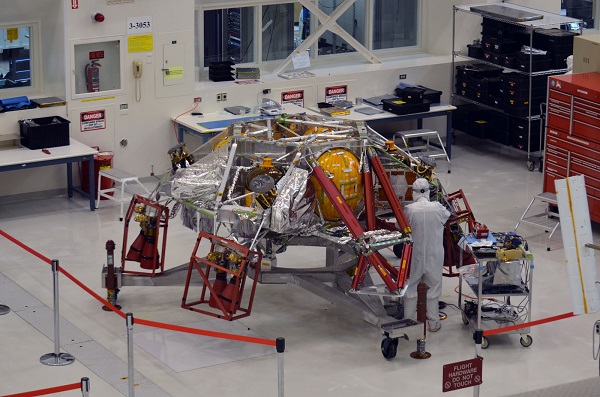
NASA / JPL / JHUAPL / MSSS / Brown University.
After a lengthy selection process, NASA has chosen Jezero Crater in the Martian northern hemisphere as the landing site for its Mars 2020 Rover.
The announcement came Monday, November 19th, after a five-year selection process that considered over 60 candidate locations scattered across Mars. As with every landing selection, there's an ongoing tension between choosing a safe location for landing versus a location that is scientifically rewarding to visit in the first place.
In early 2017, NASA announced three possible landing sites as possible finalists. The other two close contenders were Columbia Hills (explored by NASA's Spirit rover until it fell silent in 2010) and the Northeast Syrtis region of Mars, adjacent to Jezero Crater. Mission scientists settled on Jezero at the Fourth Mars 2020 Rover Landing Site Workshop last month.
“The landing site in Jezero Crater offers geologically rich terrain, with land forms reaching as far back as 3.6 billion years old, that could potentially answer important questions in planetary evolution and geology,” said Thomas Zurbuchen (NASA) in a recent press release. “Getting samples from this unique area will revolutionize how we think about Mars and its ability to harbor life.”
Welcome to Jezero Crater
Located near latitude 19°N and longitude 77.5°E in the Syrtis Major region, the 30.4-mile-diameter (49-kilometer) Jezero Crater appears to have once been flooded with water early in the history of Mars, and contains many promising geological targets for the rover, including at least five varieties of rock as well as an assortment of carbonates and clays. These are crucial for the mission, as the Mars 2020 Rover will specifically look for signs of life past and present on Mars. The crater seems to also have been a watershed for a nearby flowing delta fan, which might have carried nearby material into the crater.
But the crater will also be a challenging place for the Mars 2020 Rover to land and operate. The crater is littered with smaller impact craters and large boulders. There are also depressions filled with wind-driven sand, spots that could act as sand traps for a rover.

NASA / JPL / additions by author
Planning for Landing
The Mars 2020 Rover will land using the sky-crane descent technique pioneered by the Mars Curiosity Rover, which successfully landed in Gale Crater on August 6, 2012. Since then, researchers have gotten much better at predicting where the lander will end up, shrinking the targeted landing area for the Mars 2020 Rover down from half that of Curiosity's. Unlike Curiosity, the Mars 2020 Rover will employ a new landing capability known as Terrain Relative Navigation (TRN), which will allow the rover to autonomously analyze the landing site and maneuver to avoid hazardous areas during descent. The ASPIRE suborbital launches out of NASA Wallops in Virginia also completed testing of the descent parachute for the mission this past summer.
The site selection isn't finalized yet, however. Now, the Jezero Crater selection is dependent on analysis and verification testing of the TRN capability. NASA's Mars Reconnaissance Orbiter will also now map the terrain at Jezero Crater in greater detail. A final report on the site made by an independent review board is due in the fall of 2019 to NASA Headquarters.
“The Mars community has long coveted the scientific value of sites such as Jezero Crater,” said Ken Farley (NASA-JPL) in a recent press release. “The challenges with safely landing were considered prohibitive, but what was once out of reach is now conceivable, thanks to the 2020 engineering team and advances in Mars entry, descent and landing technologies.”
Landing on Mars is hard, that's for sure. The European Space Agency lost its Schiaparelli Entry, Descent and Landing demonstrator in 2016 when it attempted to set down on the planet. Lessons learned from that experience will get paid forward for ESA's ExoMars rover mission, also launching in 2020 for a 2021 landing in the Oxia Planum region on Mars. NASA actually has a pretty good track record when it comes to Mars landings, acing seven landings since Viking 1 on July 20, 1976, with only one failure, the Mars Polar lander mission in 1999.
If all goes as planned, Mars 2020 will launch atop an Atlas V rocket from Cape Canaveral Florida in July 2020, for a landing in February 2021. In addition to exploring Jezero Crater, Mars 2020 will collect samples for a possible sample return mission on a later date. A small helicopter scout will also accompany the rover, a first for any planetary mission.
Let's hope the Great Galactic Ghoul—a fictitious space creature coined to explain ill-fated Mars missions with an appetite for tasty human spacecraft—doesn't know that the Mars 2020 Rover is heading to Jezero Crater.
 0
0










Comments
You must be logged in to post a comment.